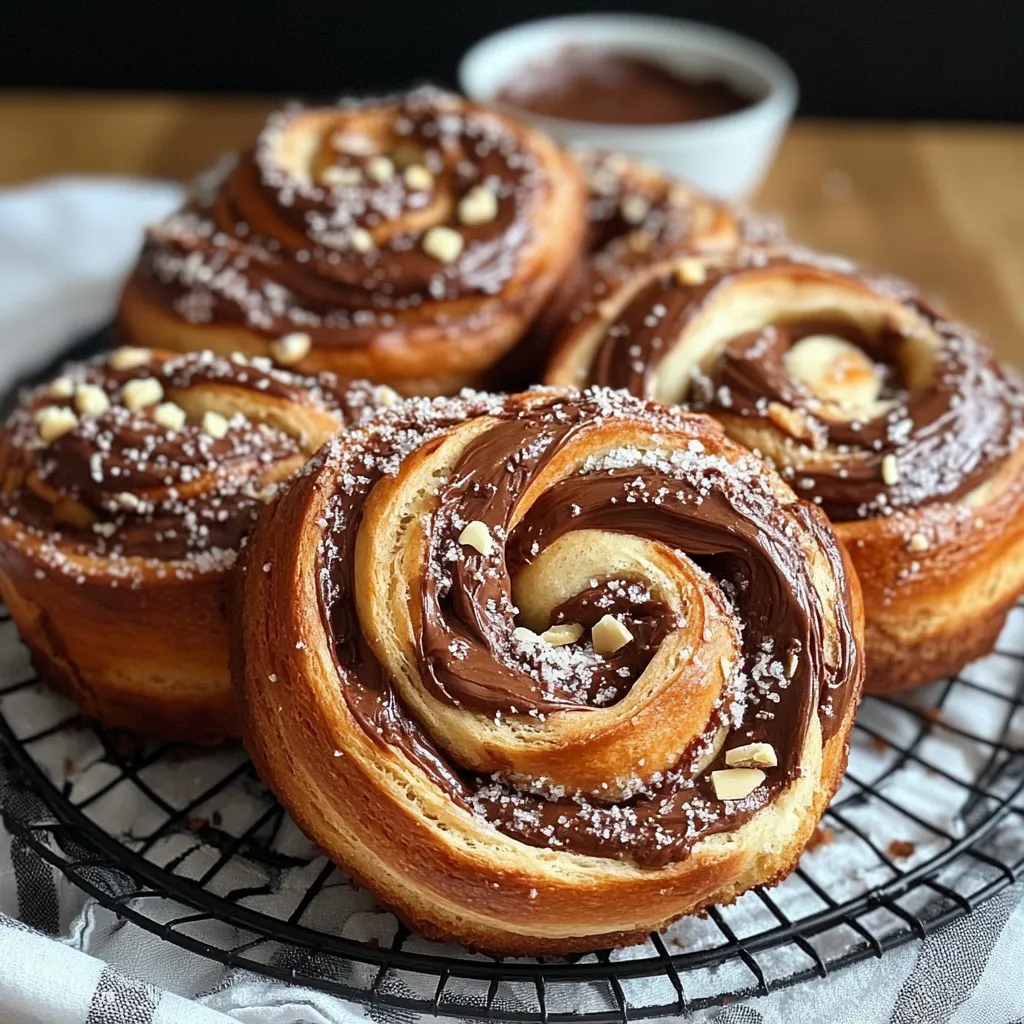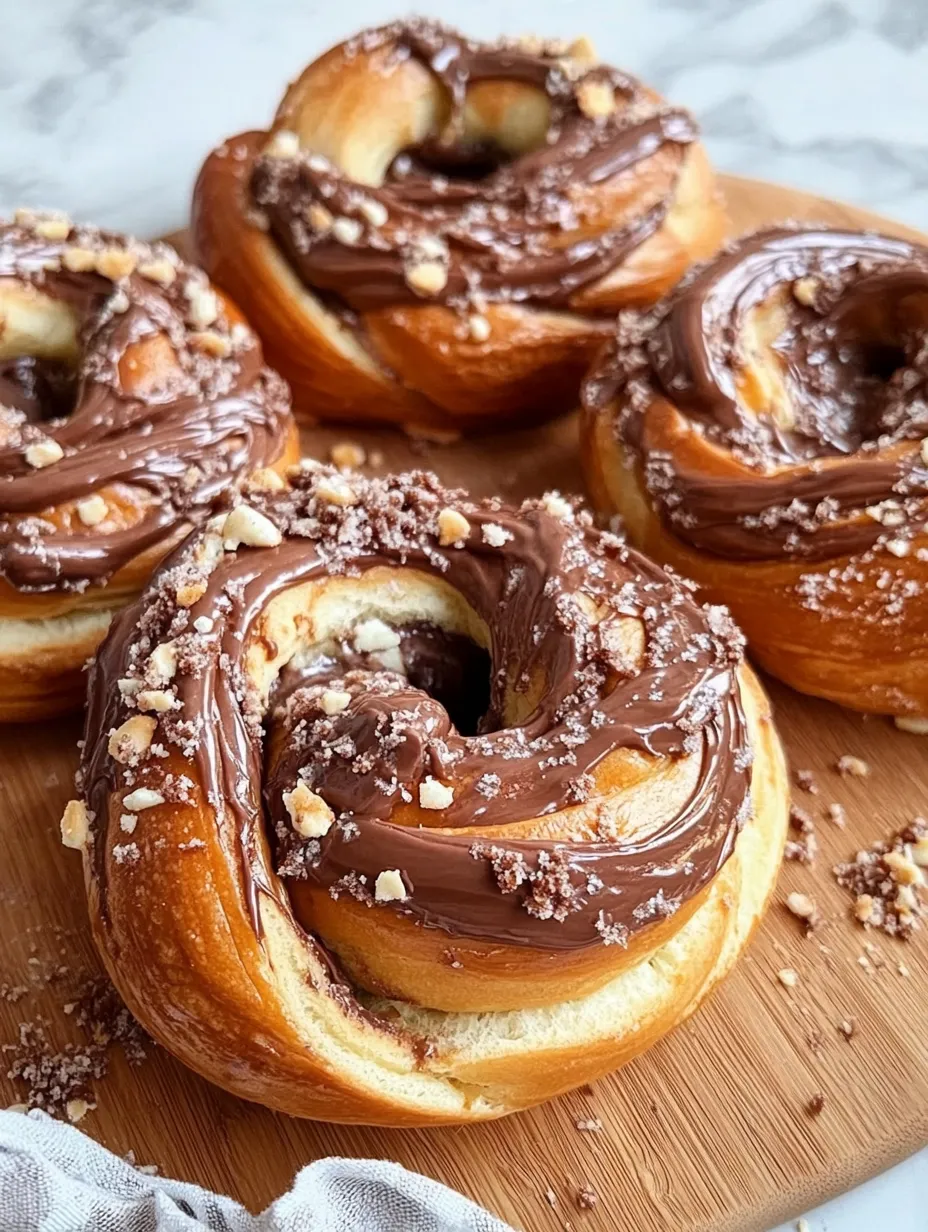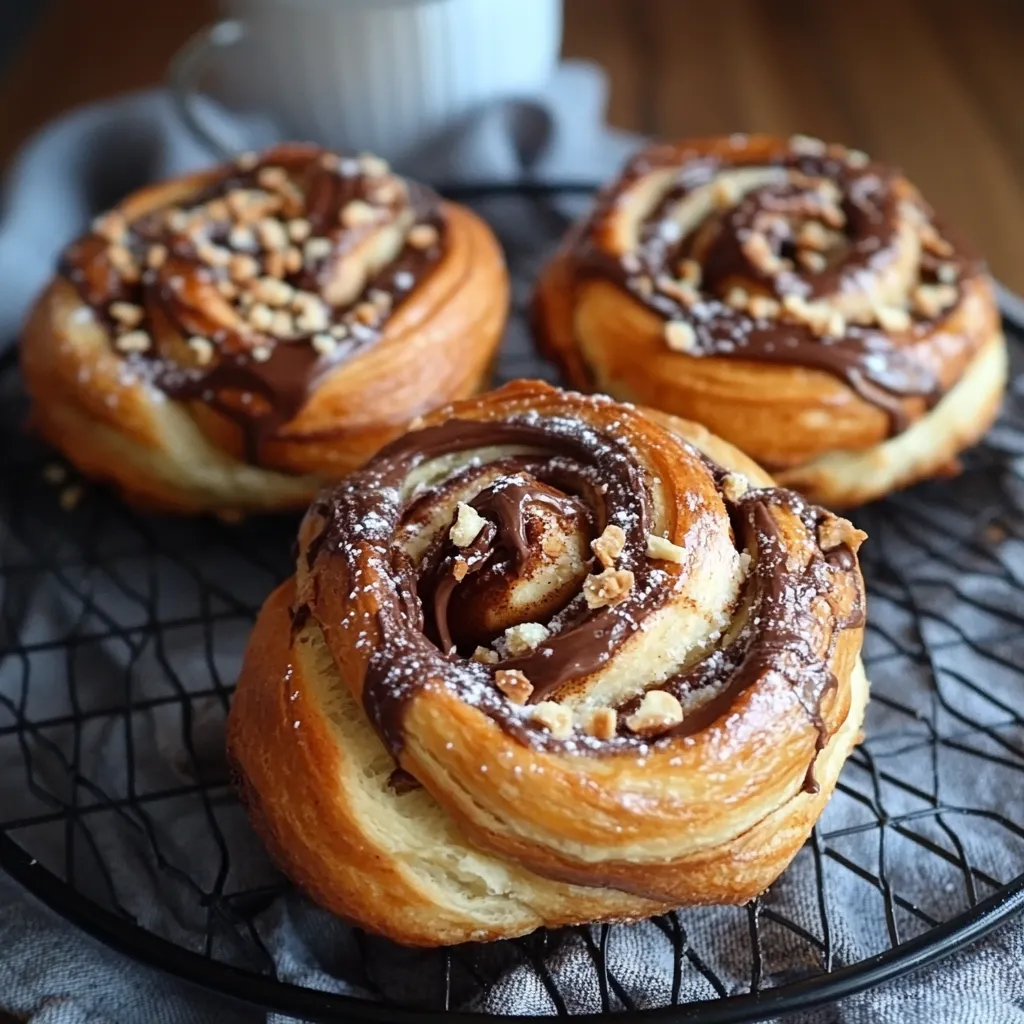 Pin it
Pin it
Mix chocolate hazelnut spread, crushed halva, and fluffy bread dough for an amazing breakfast treat. These babka rolls show off the perfect balance between soft, puffy dough and rich, nutty fillings. Each twist reveals layers of Nutella, pistachio halva, and melted chocolate chunks, creating a wonderful mix of textures and flavors that'll wake up your taste buds.
Last weekend, these rolls became the talk of our family breakfast. The mix of Middle Eastern halva with Italian Nutella created such an interesting flavor combo that everyone started chatting about baking traditions from around the world.
Key Ingredients
- Active Dry Yeast: Make sure it's fresh for proper rising
- Room Temperature Butter: Soft but not melty
- Warm Milk: Around 110-115°F to wake up the yeast
- Pistachio Halva: Go for halva that's fresh and crumbles easily
- Quality Nutella: Keep it at room temp so it spreads smoothly
- Vanilla Bean: Not required, but adds an extra touch of fancy flavor
After many test batches, I've learned that room temp ingredients and getting the kneading just right are super important for the best dough texture.
Step-by-Step Guide
- 1. Dough Making:
- Get your milk to the right warmth (110-115°F) - too hot kills yeast, too cool won't wake it up. Mix all dry stuff first so salt and sugar spread evenly. Cut butter into small chunks so it mixes in better. After adding eggs, mix at medium speed for exactly 2 minutes - this helps develop the gluten. Knead until you can do the window test - stretch a small piece until it's see-through without tearing. The first rise takes patience - look for doubled size and a slight dent that stays when you poke it gently.
- 2. Filling Preparation:
- Warm your Nutella slightly for easier spreading - usually 10 seconds in the microwave does the trick. Break up the halva by hand for different sized pieces. Don't crush it too fine or you'll lose the texture, but too chunky means uneven spreading. Layer your fillings thoughtfully - start with a thin Nutella layer, then scatter halva and chocolate pieces evenly. Leave the edges clean for proper sealing. Room temp ingredients spread better and won't tear your dough. Balance is key - too much filling makes weird-shaped rolls that bake unevenly.
- 3. Shaping Technique:
- Roll dough to even thickness - this makes sure everything bakes at the same rate. When cutting filled rolls lengthwise, use a sharp knife and one confident cut for clean edges. Twist with cut sides facing up to show off the filling pattern. Form the coil with a gentle touch - too tight and it can't rise, too loose and it unravels while baking. Tuck the ends underneath securely. Place rolls with plenty of space between them for the second rise - at least 2 inches apart.
- 4. Baking Process:
- Make sure your oven's fully heated before baking starts. Put the rack in the middle for even heat. Look for golden-brown tops, but don't just trust your eyes - the bottoms should also be deep golden. Check doneness by lifting a roll - the bottom should be firm and colored. Brush sugar glaze while rolls are still hot so it soaks in better. Cool on a wire rack so bottoms don't get soggy.
- 5. Troubleshooting Guide:
- If dough feels too sticky, add flour slowly - just one tablespoon at a time. For tough dough, let it rest 10 minutes before kneading again. Filling leaking usually means too much filling or not rolling tight enough. Rolls uncoiling during baking? You didn't tuck the ends well enough. Pale crust means oven too cool; dark crust means too hot. Dough not rising? Check if your yeast is fresh and your milk was the right temp.
- 6. Serving Suggestions:
- Serve rolls slightly warm - a quick 10-second microwave brings back that fresh-baked feel. Pair with Turkish coffee or chai tea for a true Middle Eastern food experience. For brunch, set them out with fresh seasonal fruit and whipped cream. Make fancy presentations by sprinkling powdered sugar and adding fresh mint leaves. These rolls work great as part of a pastry board with seasonal fruits and nuts.
- 7. Storage Solutions:
- Keep rolls at room temp in an airtight container for up to 3 days. For longer storage, freeze unglazed rolls for up to 3 months. Thaw overnight in the fridge, then warm before eating. If you plan to freeze, skip the sugar glaze and add it fresh after reheating. Refresh day-old rolls by warming and brushing with melted butter. Store halva separately in a cool, dry place to keep its texture.
 Pin it
Pin it
Personal Thoughts: These babka rolls perfectly blend Middle Eastern and European baking traditions. Every time I make them, I think back to my first taste of halva in a Jerusalem market. The balance of textures - fluffy dough, smooth Nutella, and crumbly halva - makes something truly special.
 Pin it
Pin it
Tasty Pairing Ideas
Show off these rolls on a wooden serving board or fancy tiered cake stand. For morning meetings, cut rolls in half vertically to display the pretty spiral pattern. Great with:
- Strong fresh espresso or Arabic coffee
- Sweet whipped labneh with honey drizzle
- Fresh seasonal figs or berries depending on what's available
- Extra crumbled halva for decoration
Keeping It Fresh
Make your dough the night before and stick it in the fridge after the first rise. The slow overnight fermentation actually improves the flavor. Shape the cold dough next morning, but give it extra time for the second rise. They're best eaten the same day you bake them, but rolls can be kept in airtight containers for up to three days. Pop them in a 350°F oven for a few minutes to refresh before serving.
 Pin it
Pin it
These babka rolls have become my go-to brunch option, mixing old techniques with modern flavors. The work and attention to detail pays off with amazing results that always wow my guests.
Frequently Asked Questions
- → Can I make the dough early?
- Definitely! After the first rise, pop it in the fridge overnight. Just let it sit out to warm up before shaping.
- → What if I don’t have pistachio halva?
- Any type of halva works, or swap it with extra chocolate chips and crushed pistachios.
- → Why did my dough need more flour?
- Humidity and temperature can affect flour absorption. Add a little at a time until it’s firm and easy to work with.
- → Can I freeze these?
- Absolutely! Store the baked buns in the freezer for up to three months. Let them thaw overnight and warm them up before eating.
- → Do I need to use the glaze?
- Not at all—it's optional. The buns are just as tasty plain, though the glaze gives them extra sweetness and shine.
